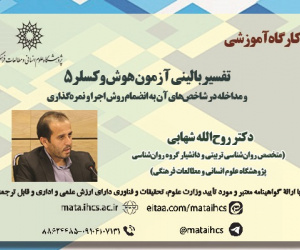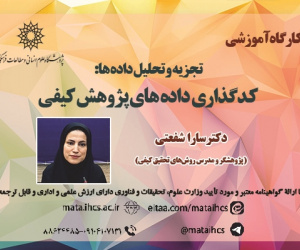چرایی تقسیم حرکت به توسطیه و قطعیه و پیامدهای فلسفی آن در حکمت سینوی (مقاله علمی وزارت علوم)
درجه علمی: نشریه علمی (وزارت علوم)
آرشیو
چکیده
مسئله ی حرکت و تغییر، از محوری ترین مباحث طبیعیات و متافیزیک است که محل تأمل اکثر فلاسفه از یونان تا دوران معاصر بوده است؛ بااین حال هستی و چیستی حرکت و یا نحوه ی تبیین یا تثبیت آن همچنان محل بحث فیلسوفان است. ابن سینا همانند بسیاری از فیلسوفان به صورت گسترده به بحث پیرامون حرکت پرداخته است. او بعد از تعریف عام حرکت و بیان دو معنا برای آن، استدلال می کند که تنها یکی از معانی حرکت (به معنای توسط) در خارج موجود است و معنای دیگر حرکت (به معنای قطع) در خیال انسان موجود است. سؤالی که عمدتاً مغفول واقع شده است، این است که چرا ابن سینا به این تفکیک دست زده و نهایتاً حکم به تحقق حرکت توسطیه داده است و به راستی این تفکیک در نظام فلسفی وی چه جایگاهی دارد؟ در این مقاله که به روش توصیفی تحلیلی و با روی کرد اسنادی سامان یافته است، تلاش شده است تا این خلأ را برطرف شود. درنهایت نتیجه ی حاصل این شد که تصویر ابن سینا از حقیقتِ حرکت، برای حل چالش های فلسفی مختلفی درباب حرکت توانا است؛ اگرچه خود وی تصریحاً درصدد چنین امری نبوده و صرفاً درصدد تحلیل تحقق خارجی و ذهنی حرکت بود ه است.The Rationale for the Division of Motion into Medial and Traversal and Its Philosophical Implications in Avicennan Philosophy
The problem of motion and change is one of the most central topics in both physics and metaphysics, and it has been a subject of contemplation for most philosophers from ancient Greece to the modern era. However, the existence, essence (quiddity), and the manner of explaining or establishing the reality of motion remain subjects of debate among philosophers. Avicenna, like many philosophers, discussed motion extensively. After providing a general definition of motion and proposing two meanings for it, he argues that only one of these meanings—medial motion—exists externally, while the other—traversal motion—exists only in the human imagination. A question that has been largely neglected is why Avicenna made this distinction, ultimately affirming the external realization of medial motion, and what is the precise place of this distinction within his philosophical system? This article, which employs a descriptive-analytical method with a documentary approach, seeks to address this gap. Ultimately, the study concludes that Avicenna’s conception of the reality of motion is capable of resolving various philosophical challenges concerning the topic, even though he himself did not explicitly set out to do so and was merely focused on analyzing the external and mental realization of motion.








